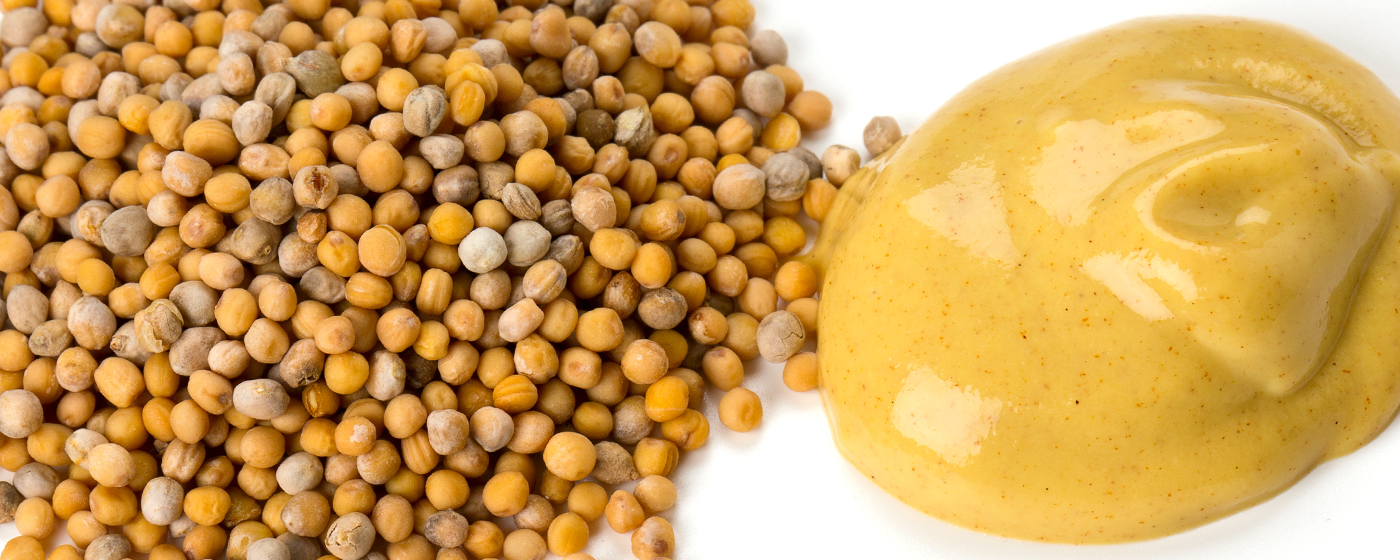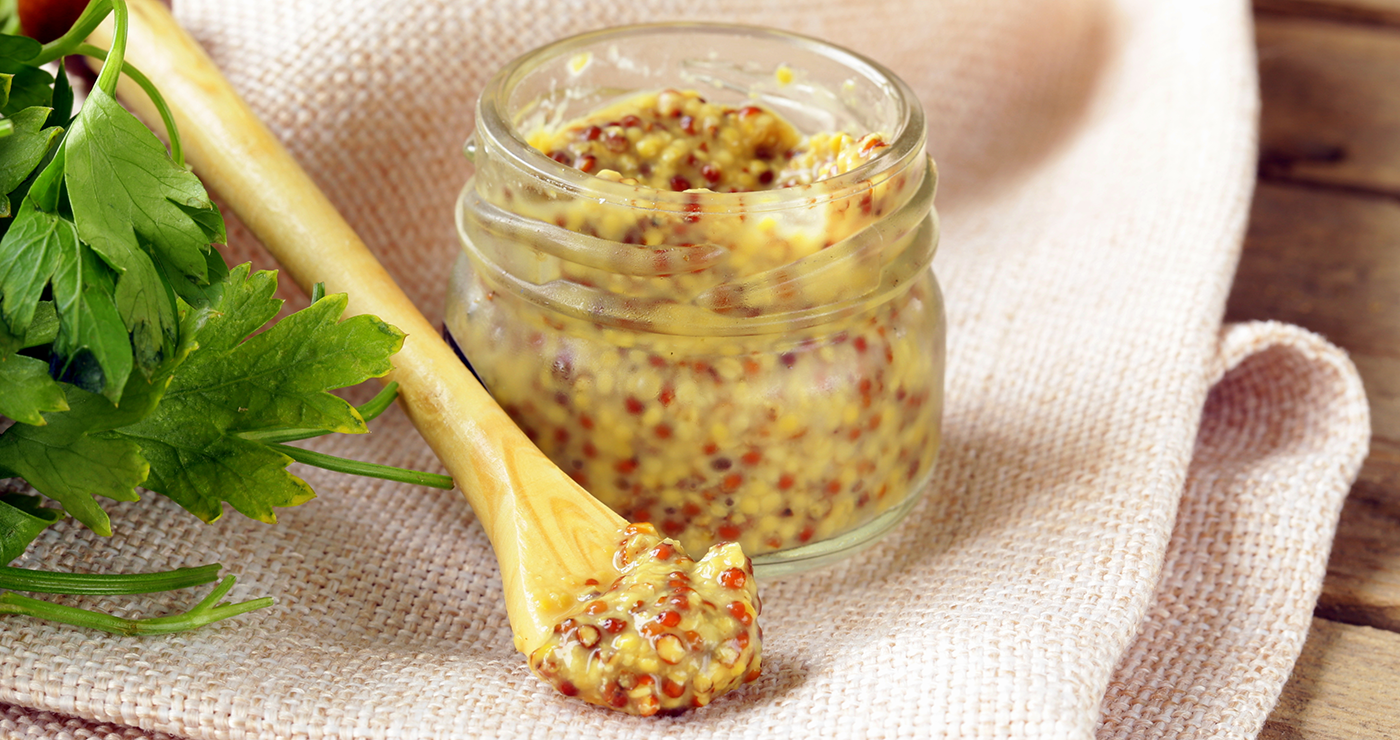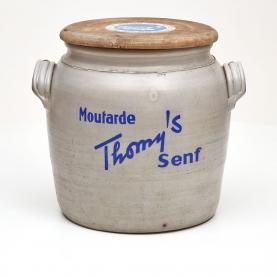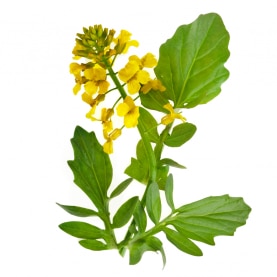Mustard as a condiment
Mustard is one of Europe’s oldest condiments. The word originally comes from the Latin 'mustum ardens', meaning ‘burning must’ because, in Ancient Rome, its seeds were ground and mixed with grape must. Since that time, its ingredients have barely changed: ground seeds, honey, vinegar and spices. The secret of the recipe comes from synapic fermentation, caused by mixing the ground mustard seeds with a liquid, which gives the mustard its hot flavour.
The hot history of a condiment
Mustard is one of Europe’s oldest condiments. The word originally comes from the Latin mustum ardens, meaning ‘burning must’ because, in Ancient Rome, its seeds were ground and mixed with grape must (unfermented juice). According to a Roman recipe from the 4th century BCE, the ingredients of mustard have barely changed over time: honey, vinegar, spices and ground mustard seeds.
The Romans introduced mustard to other countries in Europe and it became popular in Germany and France around the 10th century. It arrived in England later, around the 12th century. A thriving mustard trade developed for the first time in Dijon in the 14th century, then in the 16th century in England. Due to the fact that mustard was cultivated locally and available at a low cost, it was the only condiment accessible to everyone during the Middle Ages in Europe, but its popularity declined when exotic spices became more affordable. Mustard has traditionally been sold as a ready-to-use paste in a glass or stoneware pot, and nowadays is also available in a tube. It has also always been marketed in powder form, particularly in England.
From sorting machine to tube-filling
Upon arrival at the factory, the mustard seeds are first cleaned then conveyed along a sorting machine which removes impurities using vibrations. The seeds are then crushed in a machine (liberation of the myrosinase enzyme) and poured into a vat where various ingredients are added, such as vinegar, water, salt, sugar and spices (for example pepper, coriander, paprika and turmeric). Upon contact with a liquid like water or vinegar, the myrosinase enzyme produces allylsenevol from the sinigrin in the dark grains or from the sinalbin in the white grains. This essential oil enhances mustard’s hot flavour. This process is called synapic fermentation. At this stage of the process, it is essential to remain at a safe distance from the production vats as allylsenevol makes the eyes sting severely. The mixture is then conveyed to two rotating mills that grind the seeds, first coarsely then more finely. The paste, apart from the one used for old-style mustards, is then sent to a centrifuge where the seed coat, known as testa, is removed. The paste is then left to rest for a few hours, or even several days, so that its bitterness wears off. It is then homogenised before being packaged.
Mild, strong, seeded...
There are many kinds of mustard made from black, white or brown seeds, or a mixture of all three. They may be more or less mild (German and American mustards), very strong (English mustards), contain finely-crushed seeds (Dijon mustard), coarse seeds (Meaux mustard), or be spiced or flavoured with herbs, garlic, anchovies, lemon, horseradish, coriander, curry, shallots, vintage wines, (champagne or sherry amongst others), tomatoes, pineapple, nettles, berries or even candied fruit (Cremona mustard). Used as a condiment in the western world, mustard is served with grilled or stewed meat, and fish in Scandinavian countries. It also seasons salad dressings. In India, brown mustard seeds are used to spice up many dishes. When heated, they release a hazelnut flavour.
Nutrition
White mustard seed is 20% to 30% protein, 24% to 35% oil, 6% to 12% lipids and 12% to 18% carbohydrates.
CHAMBRE D’AGRICULTURE DE CÔTE D’OR. Qu’est-ce que la moutarde ? Chambre d’agriculture de Côte d’Or [en ligne]. [Consulté le 27 novembre 2015]. Disponible à l’adresse : http://www.cote-dor.chambagri.fr
CHAMBRE D’AGRICULTURE DE CÔTE D’OR. La fabrication de la moutarde. Chambre d’agriculture de Côte d’Or [en ligne]. [Consulté le 27 novembre 2015]. Disponible à l’adresse : http://www.cote-dor.chambagri.fr
IBURG, Anne, 2006. Moutarde. Les petites encyclos. Les épices. Paris : Gründ. pp. 264-273.
JOREK, Norbert, 1983. Moutardes. In : Epices et plantes aromatiques. Paris : Hatier. p. 100.
NORMAN, Jill, 1991. Moutarde. In : Les épices, leur emploi dans la cuisine d’aujourd’hui. Paris : Hatier. pp. 23-25.
VITAUX, Jean et FRANCE, Benoît. 2008. Moutarde. Dictionnaire du gastronome. Paris : Presses Universitaires de France. pp. 619-620.










